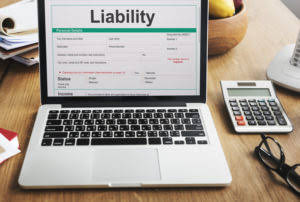
With payment reconciliation, your business can ensure that the total money collected or earned matches the net sales amount. The other popular definition of payment reconciliation is – “A method of bookkeeping which consists of the comparison of financial records – those internally logged with bank statements and maintained by accountants”. Cash payments do not directly affect bank reconciliation since they do not appear on bank statements. However, it’s crucial to accurately record cash transactions in the accounting system and ensure they are matched with corresponding receipts to maintain overall financial accuracy.
Do cash payments affect bank reconciliation?
- Cash withdrawals lack detailed digital records and it’s possible that the cash was used for multiple smaller transactions.
- In this article, we delve into the transformative power of reconciliations using our product as an example.
- It’s not usually practical for employees to count their inventory every time they need to make a reference.
- The more PSPs you partner with, the more ledgers and ledger formats (that tend to change often) you have to deal with.
- The process of payment reconciliation begins with open bills and invoices in a business’s accounts payable (AP) system that indicate the need to pay suppliers for services or products.
However, businesses can address these challenges by opting for an automated reconciliation solution. For instance, https://www.bookstime.com/ there are different banking practices, engagement rates, differences in currencies, and what not. And considering all these factors manually with 100% accuracy is not possible, leading to inefficient reconciliation.
- Strategies like flagging cleared versus pending transactions and grouping unspecified repetitive fees can aid the bank reconciliation.
- Payment reconciliation is an integral part of accounting and is typically performed regularly.
- You need to retrieve all internal and external records to start with the reconciliation process.
- Considering the complexities of payment reconciliation (even in the era of automation) and its impact on the overall financial health of your business, seeking expert guidance often saves time and money in the long run.
Accurate Financial Reporting

If the totals don’t match, it could indicate an accounting error or an employee theft. Bank reconciliation is one of the most common and complex forms of reconciliation. The sheer number of ways money flows out retained earnings and inside the bank accounts makes this process complex.
Remove manual processes

Let’s jump right into the differences and the payment reconciliation process, including why you need payment reconciliation it, what are some of the best practices, and how automation can help. Imagine a world where your bank account balance never matched your receipts, merchants couldn’t track their earnings accurately, and hours were spent each day reconciling thousands or hundreds of thousands of transactions. Individuals should reconcile bank and credit card statements frequently to check for erroneous or fraudulent transactions.
- With routine reconciliation, companies can ensure payments in and out reflect natural cash flow, allowing finance teams to produce financial statements that accurately represent performance.
- This involves separating responsibilities such as initiating/authorizing transactions, recording transactions, custody of assets, reconciling accounts, and approving payments.
- However, certain traditional challenges persist and some new challenges have emerged.
- These forecasts are invaluable for a business’ planning in the short and long terms.
- Moreover, errors in mass payments can lead to overpayments or underpayments, creating further complications.
- When an account is reconciled, the statement’s transactions should match the account holder’s financial records.
- To fully automate the process, creating connections with your banks is necessary to automatically fetch bank statements before the automated matching can kick in.
- The principal objective behind the comparison is to identify if records tallies or not.
- After 60 days, the Federal Trade Commission (FTC) notes, they will be liable for “All the money taken from your ATM/debit card account, and possibly more—for example, money in accounts linked to your debit account.”
- As digital wallets gain popularity, businesses must engage with reconciling transactions made through these platforms.
- A supervisor or financial controller should review and approve the final reconciliation report.
Once the cause has been identified, businesses then need to resolve the discrepancies by making corrections and adjusting journal entries. Master end of day reconciliation for financial accuracy, fraud prevention, and better decision-making with this comprehensive guide. Here is a comprehensive overview of payment reconciliation and its various parameters.
Delays in Issuing Month and Year-End Financial Statements

GoCardless helps you automate payment collection, cutting down on the amount of admin your team deals with when chasing invoices. Keeping on top of a business’s finances requires the right tools, strategy and collaboration. But when she begins the most recent year, Lori finds fraudulent transactions on the latest statement. And looking back on previous months, there are similar transactions throughout the whole year totaling thousands of dollars paid for by her business. Rocco leads the delivery of new Payment features and functionality to ensure increased Accounts Payable efficiency, improved payment security, and greater visibility into your payments. Before joining MineralTree, Rocco held previous positions in corporate strategy and process improvement for a retail brand and boutique consulting firm in Boston.
